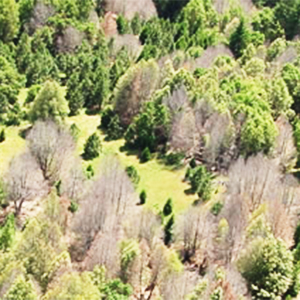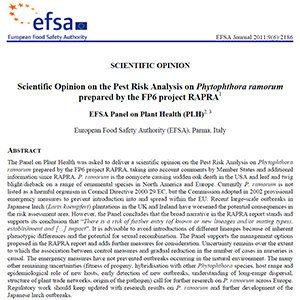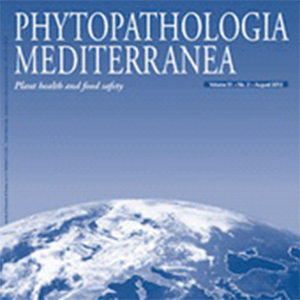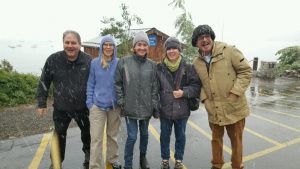FireFAQs Information
This FAQ is designed as a general resource for people at all levels to learn about wildfires and ask questions, make comments, and leave messages in the Question and Comment section below. Questions, comments, and answers that are novel will be made public anonymously so that others with the same issue and question may access the answer on this website.
Are there better ways we can fight fire?
Can updating building codes really make a difference?
Are there videos or YouTubes I should watch to familiarize myself with problem areas on my home and ways to fire harden my home?
Yes, there are many excellent resources. Here are just a few.
- Living With Fire Webinar Series: https://www.firesafemarin.org/living-with-fire
- Harden Your Home Webinar by Alice Cantelow: https://www.oakhillfiresafe.org/harden-your-home-webinar-by-alice-cantelow
- Your Home and Wildfire. Choices that can make a difference: https://www.youtube.com/watch?v=pfbEcMeYFFA&feature=youtu.be
- Siding Fire Demonstration: https://www.youtube.com/watch?v=A4bnTV0wX5g&list=PLeL7SD8uUSoLaVFimUzcrZQC0pS4-TVCB
- Combustible Trim Burn: https://www.youtube.com/watch?v=kav7P-nuba8&list=PLeL7SD8uUSoLaVFimUzcrZQC0pS4-TVCB&index=2
- Roof, Gutters, Siding, and Fencing Burn Demo: https://www.youtube.com/watch?v=dttBw2FnYy4&list=PLeL7SD8uUSoLaVFimUzcrZQC0pS4-TVCB&index=3
- Decking Burn Demonstration: https://www.youtube.com/watch?v=TWhe1qA9B2g&list=PLeL7SD8uUSoLaVFimUzcrZQC0pS4-TVCB&index=4
- About Fire Retardant Gels: https://disastersafety.org/wildfire/about-fire-retardant-gels/
What’s the Basis for the 5′ Set Back Around Homes?
The 5-foot set back commonly called for in codes, is based on studies at IBHS and other labs. When we know that embers can travel 1-5 miles, the 5-foot setback may appear inconsistent with that risk. Post fire event investigations have concluded that some home ignitions were attributed to attached wood fences, fire wood storage and other combustible elements or structures in close proximity to the home. While the 5-foot set-back may be established in code, remember that code is a minimum standard of care and that a best practice may call for a set-back of 10 feet or more.
How can the 5 foot set-back be applied in zero-lot line subdivisions or in manufactured housing communities where structures, fences and other combustible elements are in close proximity?
I know that a Class A roof is a well proven option in wildfires, but I understand sidings such as vinyl, and chemically treated wood are permitted under the CA wildfire code. I am concerned that vinyl siding is not ideal in wildfire zones and question whether the chemical treatment on wood will maintain its performance over the years after weathering and exposure to the sun and elements. Are there suggested best practices for siding materials?
Yes, there are a number:
- Cement Siding – this is viable option and good defense against ignition. However, fire tests show and post wildfire events show that burn-through even cement sidings can happen, allowing flame to enter the wall cavity. Certain profiles such as ship lap, with long running lengths of gaps, small panels the resemble shakes, and even large panels where gaps may be covered by cement battens are all susceptible to flame penetration into the wall cavity. A best practice is to ensure that there is a non-combustible backer such as Type X fire rated gypsum board or mineral wool board insulation of at least 1″ thickness behind cement siding.
- Vinyl, Chemically Treated Wood, and Combustible Sidings – if these sidings are to be used or permitted, as with the cement siding, these should have a backer of Type X gypsum or mineral wool to protect the wood structural sheathing and block entry of flame into the wall cavity.
- Meeting the Energy & Wildfire Codes: It should be noted that where mineral wool board is selected, this can help with meeting the CA energy code as well as fire hardening objectives.
- Concrete Sandwich Panel Construction: while wood frame construction is the predominant construction method in North America, one practice that would be a suitable option in wildfire areas would be a sandwich panel comprised of a concrete outer shell with a core of rigid foam insulation. Such types of construction are generally more expensive than traditional wood frame but that can be attributable to it’s uncommon.
How much does it cost to fire harden my existing home?
That will vary depending on the age of the home, the code it was built under, and the level of maintenance that has been done over the years. CALFire has developed a Retrofit Guide: Home Hardening – Low Cost Retrofit List: http://www.readyforwildfire.
Are there funds available to improve my property and site to reduce fire spread risk and funds for retrofitting my home?
In reality, this is a significant gap that requires significant action by state and local governments, working with the private sector. However, there are some resources, but they are limited, challenging to secure, slow to be issued, and vary significantly based on your locale. Some grants are available through local non-profits or local government organizations receiving FEMA and other federal or state funds. Your best resource is always your local FireSafe Council or FireWise community group. Each funding resource comes with their own terms and conditions.
- Retrofitting Homes for Fire Hardening through Residential PACE financing programs. PACE programs for residential and commercial builders are the best and only market viable means of the State addressing existing homes and buildings. Currently the Sonoma County PACE program appears to be the only one that considers fire hardening. Designed to finance energy efficiency improvements to homes, this program defines fire hardening improvements as eligible for financing. https://sonomacounty.ca.gov/General-Services/Energy-and-Sustainability/Financing-and-Rebates/ A best practice would be for local governments to embrace Residential and Commercial PACE programs for both existing and new construction.
- State & Federal Grants: FEMA provides funds to the States and local organizations to help with retrofits. Though well intended, these are viewed by many property owners are very challenging to gain access to and they take time to be made available once approved. Your best resource for locally available funds in your local city or county government, fire district office, or FireSafe Council (https://cafiresafecouncil.org/resources/fire-safe-councils/map-of-fire-safe-councils/)
- San Mateo Grants (example): https://www.firesafesanmateo.org/resources/grants
- Proposed CA Legislation: over the years a number of very well-intended bills have been proposed to create funding opportunities for new and existing homes and buildings. These have included tax credits, grants, insurance incentives, and other incentives. Many of these never get a hearing to be debated. Others get diluted as they proceed through the process. Those that do get adopted and enacted, often never get the budget allocation to fund the activities to improve communities and homes. Still others enacted into law are assigned to a State agency to develop rules and regulations to implement a policy but those processes take years and the effective date is often farther out. Some regulations become so diluted by special interest lobbying so as to have no meaningful impact for the citizens and voters. Since the 2013-2014 legislative session, nearly 400 wildfire related bills have been proposed. Only a handful were enacted and a smaller number were funded.
- A Suite of Incentives Needed (for New & Existing Homes) – the best scenario to address existing homes and building retrofit, as well as encouraging above code practices for new homes would include the following. These must be designed to permit and encourage leveraging all of these without penalty or added approvals and bureaucracy for “double dipping.” This is the only way to have dramatic action in the market and “cause action” on the part of property owners and new home builders and developers:
- Combine Energy Efficiency, Climate, Health & IAQ, w/ Fire Hardening – when improvements are being made, it’s the perfect time to address climate, energy efficiency, healthy homes, and wildfire at the same time as you are almost always dealing with the same components of the home (roof, siding and exterior insulation, trim, windows, doors and skylights, etc). The State has well established and aggressive climate goals all tied back to existing homes and buildings are one of the largest anchors on emissions and carbon. It would be negligent to not combine multiple policy goals and statutory mandates around climate while making fire hardening improvements. Further, there is no reason why voluntary incentives could not be included for new homes and buildings to meet the letter and intent of the Buy Clean California law that currently only applies to state buildings and infrastructure projects.
- Federal Tax Credit for Fire Hardening – tied to an above code minimum best practice
- State Tax Credit for Fire Hardening – tied to a best practice
- Aggressive Mortgage Rates & Terms – on the energy efficiency savings driven by above code best practices (Passive House), mortgages must codify and monetize the value of substantially reduced utility bills resulting from these above code homes and buildings. These savings alone can pay for the fire hardening best practices on a monthly cash flow analysis. Further, mortgage lenders should reward builders and owners of homes that are fire hardened to some best practice because such homes are a lower risk to be destroyed by wildfires. The underwriting and appraisal process must be able to quantify the value of these above code best practices.
- Personal and Business Property Insurance Incentives — the insurance industry should encourage incentives or discounts for homes and buildings that exceed code minimums and embrace best practices promoting the use of non-combustible materials as well as other design and construction practices.
- Local Tax Abatements — many local governments put in place tax abatements tied back to subdivision development and individual homes that meet some established performance level.
- PACE Programs – for new and existing homes and buildings. The State needs to explore putting a mechanism in place to address the perceptions and fears of the mortgage industry around R-PACE programs. The PACE financing industry has many options that policymakers at the State and local level can consider.
- Lean & Streamlined Grants — the well-intended grants infrastructure includes too many layers, touches, approvals, and lack of speed in getting critically needed funds to those that need them. While the tax payer needed to be protected, a more lead and efficient system needs to be developed.
I am building a new home, how much more will it cost initially to build to the California wildfire code?
Research shows that there does not need to be any added cost to meet the code minimum. These documents provide some examples of meeting some of the provisions found in the CA wildfire code:
- The Costs of Wildfire in California – An Independent Review of Scientific and Technical Information, California Council on Science and Technology – Link: https://ccst.us/wp-content/uploads/The-Costs-of-Wildfire-in-California-FULL-REPORT.pdf
- Building a Wildfire-Resistant Home: Codes and Costs (2019; Headwaters Economics) This study finds negligible cost differences between a typical home and a home constructed using wildfire-resistant materials and design features. PDF: https://headwaterseconomics.org/wildfire/homes-risk/building-costs-codes/
If the CA wildfire code might only deliver a 51% survival rate of a brand new home, what can be done to improve those odds?
Over the years, local city and county governments have often lead on policy issues, especially where they grow impatient with well-intended State or federal action that never-the-less fails due to politics and the influence pf special interests. Or local governments see the need to move faster than the state or federal government ever could. Examples of local government leadership include policy around solar mandates, the adoption of reach codes that exceed the state minimum energy code, green codes, decarbonization and electrification codes, and most recently policy around Covid. Many feel that the CA code process is too slow, incremental with respect to improvements already in the market, and far too subject to special interests that some perceive as protecting the status quo. Cities and counties can easily adopt well establish design and construction practices that can improvement fire hardening of homes and buildings. This isn’t rocket science. We know how to build superior fire hardening homes and we can do it today. The codes simply need to be brought into alignment with the reality of today’s wildfire events. The CA wildfire code has not changed in a substantive way in improving fire hardening in will over 15 years. It may be time for local governments to stop waiting on the state code process and claim ownership of their future to protect their citizens, the homes and buildings in the jurisdiction, and the financial health and well-being of their local economy, Wildfires devastate homes, business, families and communities. As a result, localities lose populations and tax revenue. These costs certainly outweigh the costs of fire hardening properties, homes and buildings. The community that exceeds code and state or federal minimums, and instead employs best practices will be more resilient than code minimum communities and will have a higher survival rate and continue to thrive, grow and attract more homeowners and businesses.
This is all so complicated, so that we are not in the same place were are today in 10, 15, or 20 years from now, what is needed to put the State on the right course?
There are many layers to this and solutions need to be appropriate and suitable for each community, but the levers can and should come from the federal, State and local levels. A solution set could include some of the following elements, and ideally should be co-mingled to allow all measures to be leveraged:
a. Mandates
- Administrative or Executive Action
- State laws that can survive the special interest lobby blitz and have a meaningful impact in the market
- Implementing regulations that do not dilute legislative intent, that are issued in a timely manner, and are updated regularly
- Local City & County government leadership where there is paralysis or incrementalism at the State or federal level
- State & local legislation enabling a lean and efficient Property Accessed Clean Energy (PACE) Financing offering for residential and commercial to flourish
b. Quasi-Mandates
- Insurance industry policy that favorably impacts consumer/builder action and rewards above code best practices
- Mortgage/Lending policy that does the same
- Federal & State Rebuilding Programs with explicit conditions that protect tax payer dollars by ensuring compliance with best practices — not the least permitted under law, the code
c. Bridge Incentives that Cause Action
- Federal, State, Local Tax Credits or Incentives
- Lean, Pain-free, and Consumer/Market Friendly Utility Incentives
- Residential and Commercial PACE Financing programs for new and existing buildings
d. Free Market Choices
- Consumers, Designers, Builders that choose best practices over code – the lowest standard of care permitted under law
- Private sector financing companies that compete to offer PACE financing where programs are put in place by local governments
My major concern is my roof. Are there tips to hiring a roofer and where can I find a qualified contractor?
- Are there tips on hiring a roofer? https://disastersafety.org/maintenance/tips-on-hiring-a-roofing-contractor/
- Where can I find a qualified contractor:
- Marin FireSafe Council: https://www.firesafemarin.org/contractors
- Contractor’s State License Board: https://www.cslb.ca.gov/
- National Roofing Contractors Association: https://www.nrca.net/Members
Can I rely on these wildfire hazard maps to identify if my community, neighborhood or home is at risk?
It’s become clear that many recent fires have ignored the boundaries of the wildfire hazard maps. When embers can be carried by winds and fire related weather between 1-5 miles, then this poses a challenge to whether the current hazard zone maps and classifications are appropriate. While the State, CALFire, academics and universities, NIST and other federal agencies study this, it may be time for local governments to apply a higher standard of care to their level of risk and default to the highest hazard classification, while also moving to adopt a wildfire code that exceeds the state minimum.
How can I prepare my family for a wildfire and possible evacuation?
There are many resources available through your local community, including your local FireSafe Council. Some resources include:
- Step one! Connect with your local FireSafe Council: https://cafiresafecouncil.org/resources/fire-safe-councils/map-of-fire-safe-councils/
- Wildfire & Emergency “Go Kit” https://www.firesafemarin.org/evacuation/go-kit
- Create a Wildfire Action Plan: https://www.firesafemarin.org/evacuation/action-plan
- Create an Evacuation Checklist: https://www.firesafemarin.org/evacuation/checklist
- Plan Your Evacuation: https://www.ready.gov/evacuation
- Family Communication Plan: https://www.ready.gov/pets
- Prepare Your Family & Practice: https://www.firesafemarin.org/evacuation/family-preparedness
- Register for your local emergency warning alert system: https://www.firesafemarin.org/evacuation/alerts-warnings
- Develop an Evacuation Route, including Options and have maps in your Go Kit: https://www.firesafemarin.org/evacuation/maps
- Monitor your access roads to ID the best evacuation routes: https://www.oakhillfiresafe.org/is-your-access-road-fire-safe
- Consider buying a GMRS Emergency Radio: https://www.oakhillfiresafe.org/gmrs-radio-another-communication-option
What should I do about my pets in a wildfire?
Yes, gathering pets in an emergency is a major problem and very stressful. They sense your stress or the conditions and my hide.
- The Humane Society is an excellent resource: https://www.humanesociety.org/resources/wildfire-faq
- Evacuating Pets: https://www.firesafemarin.org/component/content/article?id=141&Itemid=818
- Evacuating Large Animals: https://www.firesafemarin.org/component/content/article?id=140&Itemid=819
- Plan for Your Pets: https://www.ready.gov/pets
I am out of harm’s way of the wildfire, but I am concerned with all the smoke from the fires. Should I be concerned about this and what should I know?
There are some potentially serious health issues related to smoke from wildfires. Here are some resources to consider: https://cfpub.epa.gov/airnow/
Why is wildfire smoke so bad for you?
Fire smoke is a mixture of gasses and very fine particles released into the atmosphere. In addition to burning your eyes, these fine particles and gases can be inhaled deep into your lungs. This makes it harder to breathe and may worsen other chronic health conditions such as asthma or heart disease.
Why don’t we put out all fires?
Fire is a natural part of many ecosystems, and fires burned long before humans were around to put them out. Fire managers recognize that fire has been an essential part of many ecosystems for thousands of years. Due to decades of fire suppression, the natural occurrence of fire was eliminated, resulting in overgrown and unhealthy forests. Naturally occurring fires allow forests to be thinned, opening the canopy and allowing sunlight through. Fire also allows for the recycling of nutrients to the soil while reducing the amount of dead, woody debris. This allows for the sprouting and regrowth of plants, shrubs and trees.
How is fire beneficial?
Wildfires are a natural process and an essential part of many ecosystems. Fire has shaped our landscapes for many thousands of years and is important to the survival of numerous plants and animals. In fact, some plants and animals depend on fire for survival. Periodic fire stimulates growth, reproduction of plants, recycling of natural resources, and provides wildlife habitat.
Back to UCB Fire Landing Page
Ask Our Experts!












